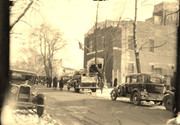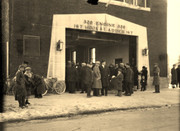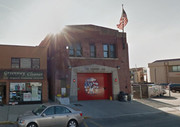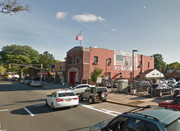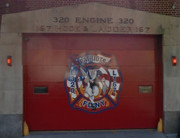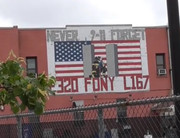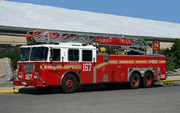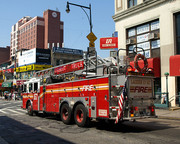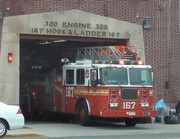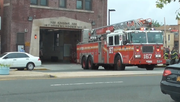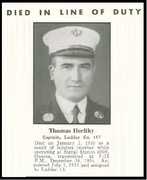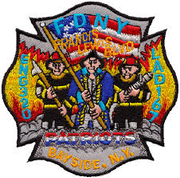Airport Crash Unit 31/Bridge Chemical Unit 62 LaGuardia Airport Queens Disbanded
Airport Crash Unit 31 organized LaGuardia Airport Hanger 4 1946
Airport Crash Unit 31 new quarters LaGuardia Airport Building 32 1947
Airport Crash Unit 31 disbanded 1947
Bridge Chemical Unit 62 organized 22-61 35th Street at Engine 312 1939
Bridge Chemical Unit 62 moved LaGuardia Airport Hanger 4 at Airport Crash Unit 31 1946
Bridge Chemical Unit 62 new quarters LaGuardia Airport building w/Airport Crash Unit 31 1947
Bridge Chemical Unit 62 moved 22-61 35th Street at Engine 312 1947
Bridge Chemical Unit 62 disbanded 1954
Airport Crash Unit 31:

1939 Diamond T:

1938 Ahrens Fox:




Fire Class Truck Class No 155 - US Army:
Tank capacity 1000 gal; 21 tons; 2 motors - driving and pumping; supplied 3 3/4 in lines; ; 2 deck guns; foam units; truck company tools

http://www.armyfiretrucks.com/155%20page.htm
Army Fire Truck Class No 125:
International chassis; Bean pump; supplied 3 3/4 in 100 ft handlines (2 water, 1 foam); truck tools:
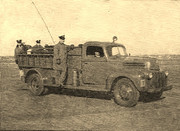
Army Fire Truck Class No 125:
Tank capacity 1000 gal; 21 tons; 2 motors - driving and pumping; supplied 3 3/4 in lines; ; 2 deck guns; foam units; truck company tools:
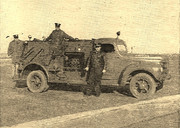
http://www.armyfiretrucks.com/125%20page.htm
1946 Mack/Brockway crash unit:
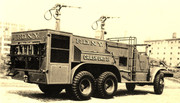
Bridge Chemical Unit 62:

Bridge Chemical Units were organized in 1939 to protect bridges and tunnels. Units had 700 GPM pumpers, 1000 ft 2 1/2 inch hose, 600 ft 1 1/2 inch hose, foam generator and hopper, 400 lbs foam powder and fire extinguishers. Bridge Chemical Unit 62 was relocated to LaGuardia Airport to support Airport Crash Unit 31 from 1946 to 1947. Bridge Chemical Units were disbanded in 1954 when FDNY purchased pumpers with booster tanks.
May 29, 1947 LaGuardia Airport DC-4 crash - FDNY response and operations:
FDNY ACU 31's firehouse was located less than 200 yards from Runway 18, the short 3,500 ft runway at the relatively new municipal airport. The pilot of a United Airlines DC-4 was attempting to take off into a sudden head wind of 23 mph. It was 8:05 PM. The housewatch desk of the firehouse had a clear view of the runway and Fireman Edward Leeds was on duty. He saw the plane struggle to lift off, heard the brakes being applied and turned out the company as the aircraft crashed through the aircraft barrier fence. He then contacted the dispatcher and requested that a box be transmitted for an emergency. The Queens dispatcher transmitted Box 7638 on the verbal. By the time Leeds finished with the dispatcher, all firefighting apparatus had left the firehouse and he had to jump on the former sanitation department flush truck used for water supply on the runways.
ACU 31 arrived at the crash site less than 50 seconds after the box was transmitted. The plane had crashed through a heavy wooden fence and had settled into a swamp adjacent to the runway. Flames lit up the area and the fuselage was surrounded by fire. The fabric coverings of the aircraft were on fire and there were burning pools of fuel and oil. Access to the aircraft for fire apparatus was limited by swamp and rocky slopes, as well as fire. Apparatus had to approach towards the right rear quarter of the aircraft. ACU 31's Apparatus 1, the heavy Army Class No 155 truck, blasted a path through the flames with deck guns. Fireman Joseph Pilipow was successfully able to clear an access corridor to the rear of the 50 ft passenger cabin. 3 hand fog lines were "raced into position" and a 16 ft ladder was thrown against the airplane about 10 ft to the rear of the wing. Fireman Joseph McLaughlin broke the surface of the aircraft and began to hit the inside with a cabin with a fog handline. The skin of the aircraft was described as "white hot". McLaughlin took a beating with the line and was relieved by Fireman Joseph Mackey. He could only hit the front of the cabin from his position. Heat had cause the sides of the aircraft to fold in.
Access to the DC-4 was only available through an 18 in x 24 in utility door. Approximately 1 minute after ACU 31 began operations, Fireman Charles Ortlam crawled through the small utility door opening, into the plane's bathroom, and gained access to the center aisleway. Passengers were still strapped in smoldering seats, some were heaped on the floor. He immediately removed 2 passengers through the utility door. This was accomplished even though the bathroom sink limited clearance to the hatch door to 10 in. Ortlam was also operating without a mask. Fireman Ortlam was removed from the aircraft and McLaughlin slid into the burning DC-4. McLaughlin quickly rescued a female passenger from the adjacent bathroom. Fireman Edward Stegmaier then cut a hole through the main door which had remained unopened. He pulled out a male passenger, freed a pinned injured passenger, and began extricating other passengers. 5 rescues were made by ACU 31 during immediate operations and prior to the arrival of other FDNY and emergency units. H&L 117 and H&L 154 arrived and began assisting ACU 31 with rescue operations. 5 more living passengers were rescued. 37 deceased victims were removed.
Firefighting operations continued to try and extinguish the burning aircraft and pools of fuel. BC Mulvaney of Bn 49 and then DC O'Connor of the 14th Division arrived and assumed command. A 2nd alarm for Box 7638 was quickly transmitted. Bridge Chemical Unit 62 and Foam Powder Supply Unit 81 were special called. Eng 307 stretched in and put a foam line into operation using ACU 31's foam generator. Eng 263 used it's deck pipe. Eng 316 and Eng 307 stretched 2 1/2 inch lines. Eng 263 used rescue 4's foam generator for a second foam line. Bridge Chemical unit put a third foam line into operation. Rescue 4 assisted with rescue efforts and took care of survivors with inhalators and 1st aid measures.
This was the worst aircraft disaster in US history to that point in time. There were 44 passengers and 4 crew members. 10 were rescued by FDNY ACU 31, H&L 117 and H&L 154, and Rescue 4. Cause of the crash was pilot error.
- WNYF 1947
4 members of Airport Crash Unit 31 received Department awards for valor for their actions May 29, 1947:
FF Charles G. Ortlam Engine 263 Department Medal Airport Crash Unit 31
FF John P. McLaughlin Engine 275 Department Medal Airport Crash Unit 31
LT Edwin G. Rankin Engine 319 Department Medal Airport Crash Unit 31
FF Edward J. Stegmaier Ladder 163 Department Medal Airport Crash Unit 31
Airport Crash Unit 31 history:
FDNY Airport Crash Unit 31 was organized to protect the new LaGuardia Airport in 1946. Primary duty was to extinguish fire and lend aid for emergencies related to aircraft entering or leaving the airport. Equipment included a Sanitation Department sprinkler and three Army fire trucks. Unit established fire protection system and procedures for airport, responded to major crash in which they saved many lives and stayed in service until disbanded and responsibilities turned over to Port Authority.


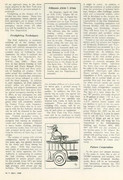
FDNY 1947 Crash Operations:
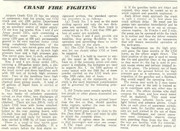
LaGuardia Airport history:
The airport site was first occupied by the Gala Amusement Park, a popular destination owned by the Steinway family:
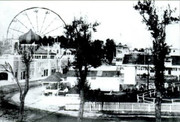
In 1929, the park was transformed into a 105-acre private flying field and first named Glenn H. Curtiss Airport after aviation pioneer Glenn H. Curtiss, and then re-named North Beach Airport:
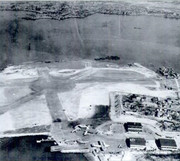
In 1937, New York City took over the airport and enlarged the grounds with the purchase of adjoining land and by filling in 357 acres of waterfront along the east side. In 1939, it re-opened with a new name, New York Municipal Airport-LaGuardia Field.
NYPD amphibian:
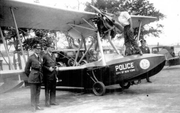
Airport was built on the waterfront to service both seaplanes and land planes.
1929 hangers were 120 ft wide state of the art hangers
NYPD operated squadron of 5 amphibians for patrol and rescue
http://www.airfields-freeman.com/NY/Airfields_NY_NY_Queens.htm#northbeach
Laguardia Airport 1940s:
La Guardia Airport 1940s
The airport was leased to the Port Authority in 1947.
http://www.panynj.gov/airports/lga-history.html
http://en.wikipedia.org/wiki/LaGuardia_Airport
Gone but not forgotten.
Airport Crash Unit 31 organized LaGuardia Airport Hanger 4 1946
Airport Crash Unit 31 new quarters LaGuardia Airport Building 32 1947
Airport Crash Unit 31 disbanded 1947
Bridge Chemical Unit 62 organized 22-61 35th Street at Engine 312 1939
Bridge Chemical Unit 62 moved LaGuardia Airport Hanger 4 at Airport Crash Unit 31 1946
Bridge Chemical Unit 62 new quarters LaGuardia Airport building w/Airport Crash Unit 31 1947
Bridge Chemical Unit 62 moved 22-61 35th Street at Engine 312 1947
Bridge Chemical Unit 62 disbanded 1954
Airport Crash Unit 31:

1939 Diamond T:

1938 Ahrens Fox:




Fire Class Truck Class No 155 - US Army:
Tank capacity 1000 gal; 21 tons; 2 motors - driving and pumping; supplied 3 3/4 in lines; ; 2 deck guns; foam units; truck company tools

http://www.armyfiretrucks.com/155%20page.htm
Army Fire Truck Class No 125:
International chassis; Bean pump; supplied 3 3/4 in 100 ft handlines (2 water, 1 foam); truck tools:

Army Fire Truck Class No 125:
Tank capacity 1000 gal; 21 tons; 2 motors - driving and pumping; supplied 3 3/4 in lines; ; 2 deck guns; foam units; truck company tools:

http://www.armyfiretrucks.com/125%20page.htm
1946 Mack/Brockway crash unit:

Bridge Chemical Unit 62:

Bridge Chemical Units were organized in 1939 to protect bridges and tunnels. Units had 700 GPM pumpers, 1000 ft 2 1/2 inch hose, 600 ft 1 1/2 inch hose, foam generator and hopper, 400 lbs foam powder and fire extinguishers. Bridge Chemical Unit 62 was relocated to LaGuardia Airport to support Airport Crash Unit 31 from 1946 to 1947. Bridge Chemical Units were disbanded in 1954 when FDNY purchased pumpers with booster tanks.
May 29, 1947 LaGuardia Airport DC-4 crash - FDNY response and operations:
FDNY ACU 31's firehouse was located less than 200 yards from Runway 18, the short 3,500 ft runway at the relatively new municipal airport. The pilot of a United Airlines DC-4 was attempting to take off into a sudden head wind of 23 mph. It was 8:05 PM. The housewatch desk of the firehouse had a clear view of the runway and Fireman Edward Leeds was on duty. He saw the plane struggle to lift off, heard the brakes being applied and turned out the company as the aircraft crashed through the aircraft barrier fence. He then contacted the dispatcher and requested that a box be transmitted for an emergency. The Queens dispatcher transmitted Box 7638 on the verbal. By the time Leeds finished with the dispatcher, all firefighting apparatus had left the firehouse and he had to jump on the former sanitation department flush truck used for water supply on the runways.
ACU 31 arrived at the crash site less than 50 seconds after the box was transmitted. The plane had crashed through a heavy wooden fence and had settled into a swamp adjacent to the runway. Flames lit up the area and the fuselage was surrounded by fire. The fabric coverings of the aircraft were on fire and there were burning pools of fuel and oil. Access to the aircraft for fire apparatus was limited by swamp and rocky slopes, as well as fire. Apparatus had to approach towards the right rear quarter of the aircraft. ACU 31's Apparatus 1, the heavy Army Class No 155 truck, blasted a path through the flames with deck guns. Fireman Joseph Pilipow was successfully able to clear an access corridor to the rear of the 50 ft passenger cabin. 3 hand fog lines were "raced into position" and a 16 ft ladder was thrown against the airplane about 10 ft to the rear of the wing. Fireman Joseph McLaughlin broke the surface of the aircraft and began to hit the inside with a cabin with a fog handline. The skin of the aircraft was described as "white hot". McLaughlin took a beating with the line and was relieved by Fireman Joseph Mackey. He could only hit the front of the cabin from his position. Heat had cause the sides of the aircraft to fold in.
Access to the DC-4 was only available through an 18 in x 24 in utility door. Approximately 1 minute after ACU 31 began operations, Fireman Charles Ortlam crawled through the small utility door opening, into the plane's bathroom, and gained access to the center aisleway. Passengers were still strapped in smoldering seats, some were heaped on the floor. He immediately removed 2 passengers through the utility door. This was accomplished even though the bathroom sink limited clearance to the hatch door to 10 in. Ortlam was also operating without a mask. Fireman Ortlam was removed from the aircraft and McLaughlin slid into the burning DC-4. McLaughlin quickly rescued a female passenger from the adjacent bathroom. Fireman Edward Stegmaier then cut a hole through the main door which had remained unopened. He pulled out a male passenger, freed a pinned injured passenger, and began extricating other passengers. 5 rescues were made by ACU 31 during immediate operations and prior to the arrival of other FDNY and emergency units. H&L 117 and H&L 154 arrived and began assisting ACU 31 with rescue operations. 5 more living passengers were rescued. 37 deceased victims were removed.
Firefighting operations continued to try and extinguish the burning aircraft and pools of fuel. BC Mulvaney of Bn 49 and then DC O'Connor of the 14th Division arrived and assumed command. A 2nd alarm for Box 7638 was quickly transmitted. Bridge Chemical Unit 62 and Foam Powder Supply Unit 81 were special called. Eng 307 stretched in and put a foam line into operation using ACU 31's foam generator. Eng 263 used it's deck pipe. Eng 316 and Eng 307 stretched 2 1/2 inch lines. Eng 263 used rescue 4's foam generator for a second foam line. Bridge Chemical unit put a third foam line into operation. Rescue 4 assisted with rescue efforts and took care of survivors with inhalators and 1st aid measures.
This was the worst aircraft disaster in US history to that point in time. There were 44 passengers and 4 crew members. 10 were rescued by FDNY ACU 31, H&L 117 and H&L 154, and Rescue 4. Cause of the crash was pilot error.
- WNYF 1947
4 members of Airport Crash Unit 31 received Department awards for valor for their actions May 29, 1947:
FF Charles G. Ortlam Engine 263 Department Medal Airport Crash Unit 31
FF John P. McLaughlin Engine 275 Department Medal Airport Crash Unit 31
LT Edwin G. Rankin Engine 319 Department Medal Airport Crash Unit 31
FF Edward J. Stegmaier Ladder 163 Department Medal Airport Crash Unit 31
Airport Crash Unit 31 history:
FDNY Airport Crash Unit 31 was organized to protect the new LaGuardia Airport in 1946. Primary duty was to extinguish fire and lend aid for emergencies related to aircraft entering or leaving the airport. Equipment included a Sanitation Department sprinkler and three Army fire trucks. Unit established fire protection system and procedures for airport, responded to major crash in which they saved many lives and stayed in service until disbanded and responsibilities turned over to Port Authority.



FDNY 1947 Crash Operations:

LaGuardia Airport history:
The airport site was first occupied by the Gala Amusement Park, a popular destination owned by the Steinway family:

In 1929, the park was transformed into a 105-acre private flying field and first named Glenn H. Curtiss Airport after aviation pioneer Glenn H. Curtiss, and then re-named North Beach Airport:

In 1937, New York City took over the airport and enlarged the grounds with the purchase of adjoining land and by filling in 357 acres of waterfront along the east side. In 1939, it re-opened with a new name, New York Municipal Airport-LaGuardia Field.
NYPD amphibian:

Airport was built on the waterfront to service both seaplanes and land planes.
1929 hangers were 120 ft wide state of the art hangers
NYPD operated squadron of 5 amphibians for patrol and rescue
http://www.airfields-freeman.com/NY/Airfields_NY_NY_Queens.htm#northbeach
Laguardia Airport 1940s:
La Guardia Airport 1940s
The airport was leased to the Port Authority in 1947.
http://www.panynj.gov/airports/lga-history.html
http://en.wikipedia.org/wiki/LaGuardia_Airport
Gone but not forgotten.

